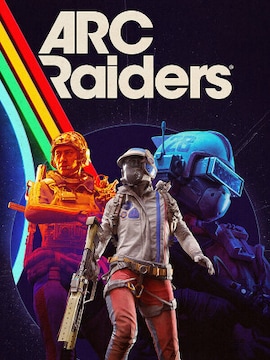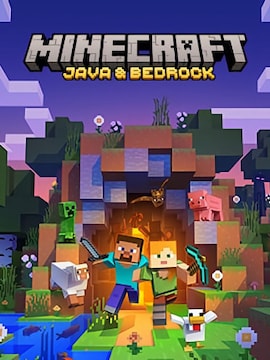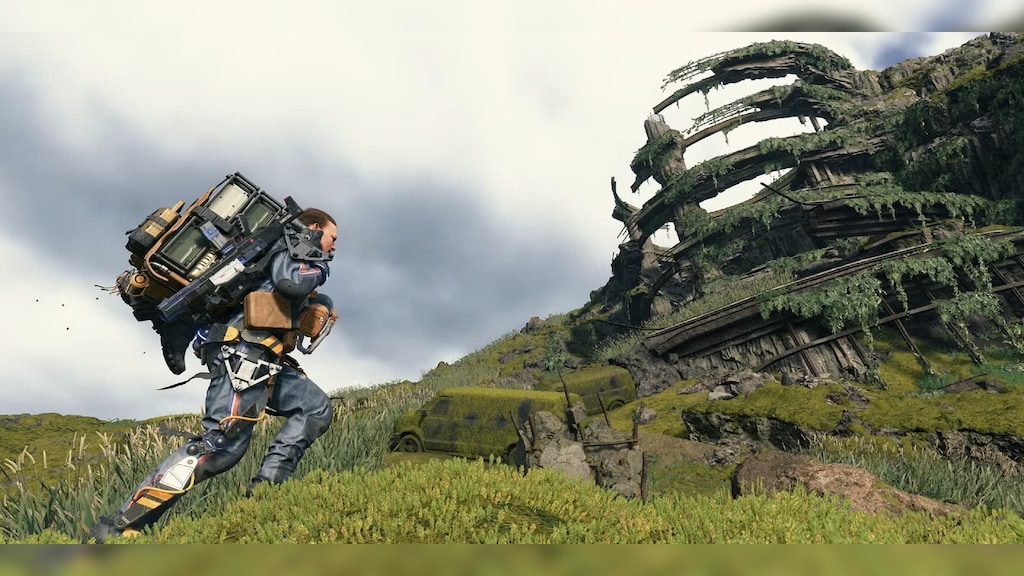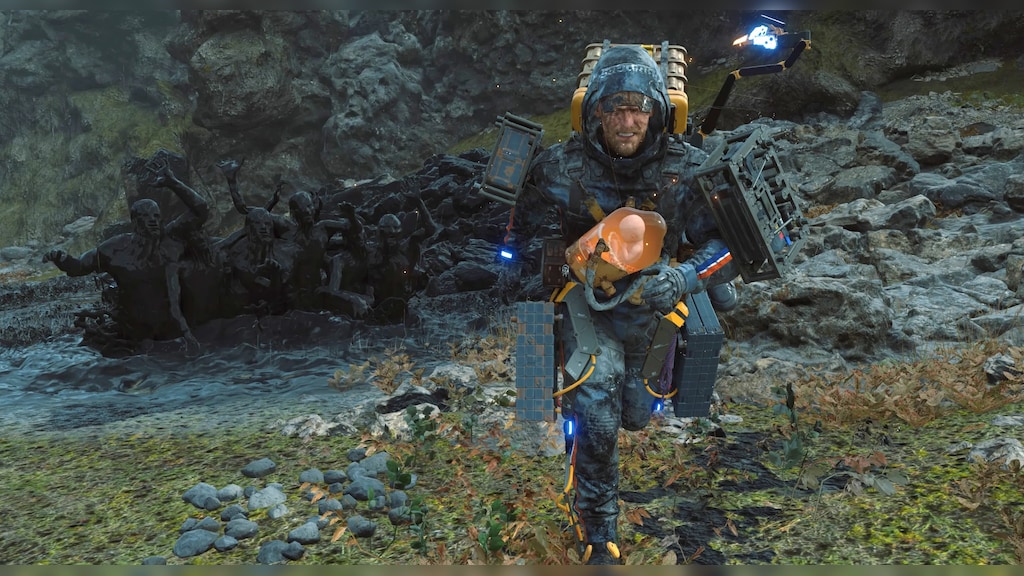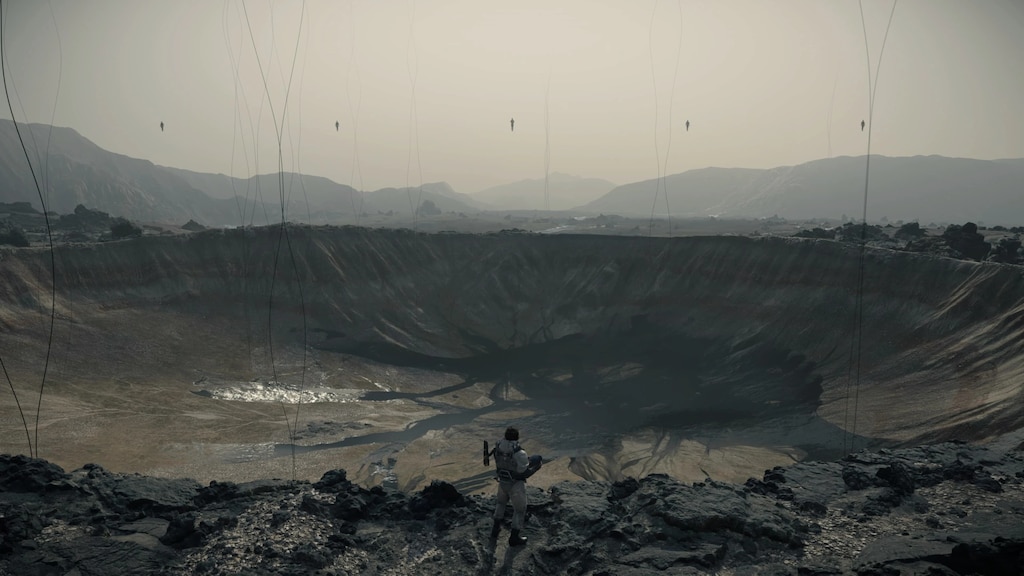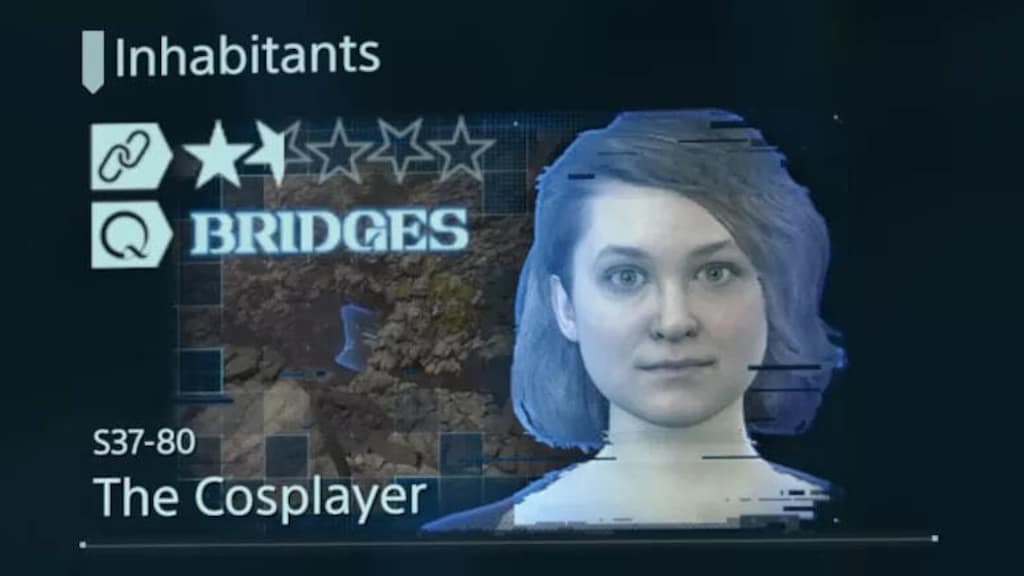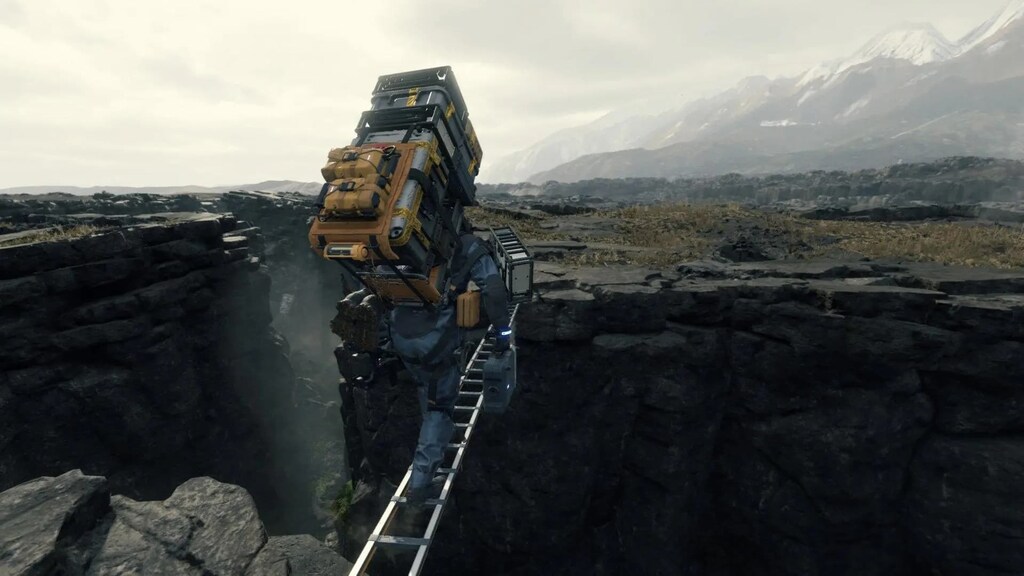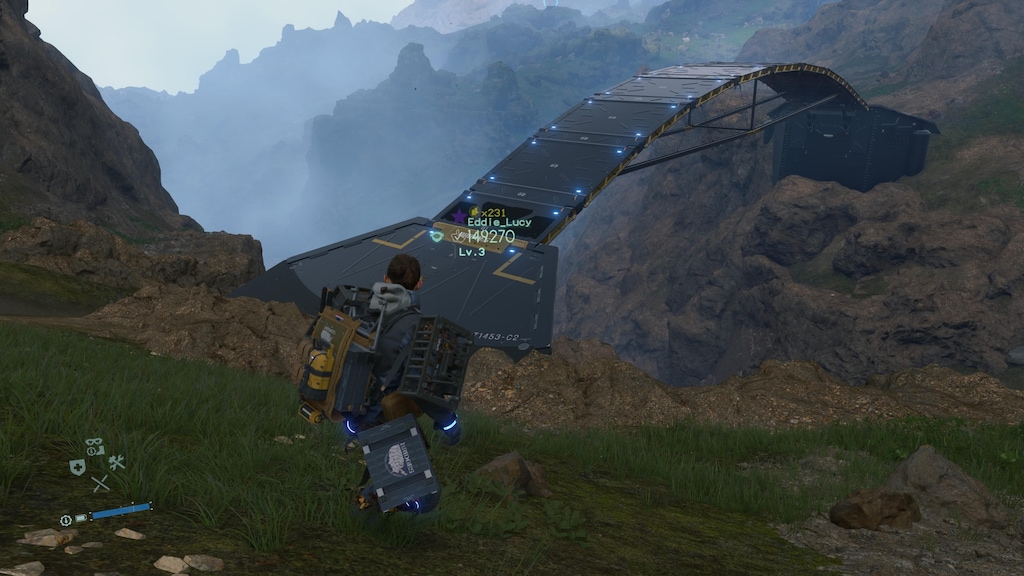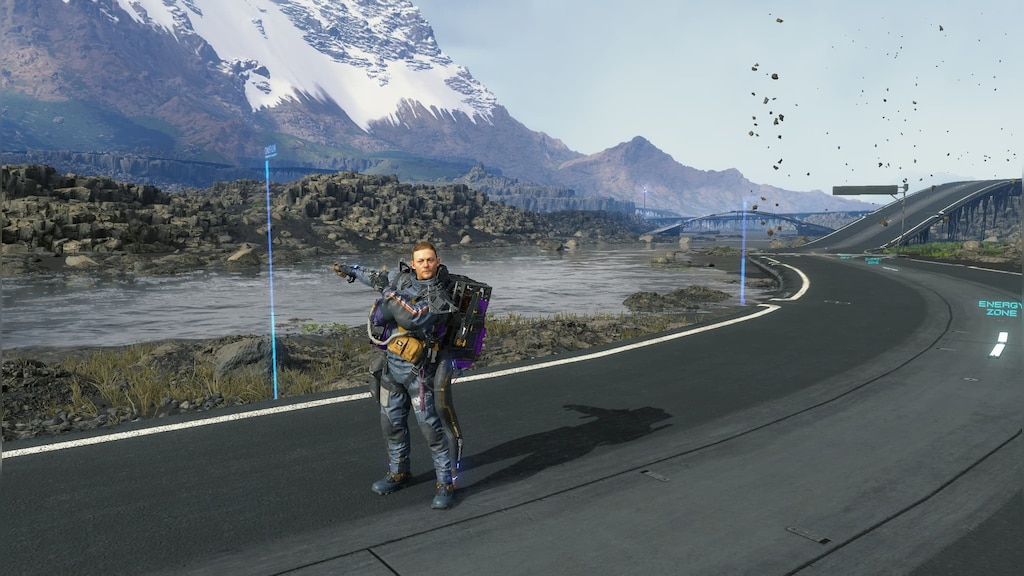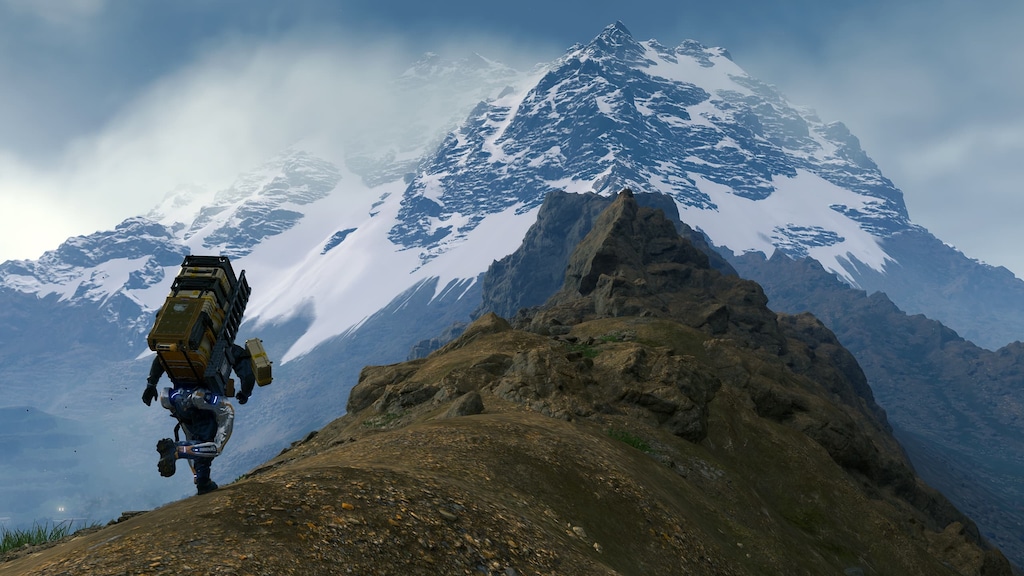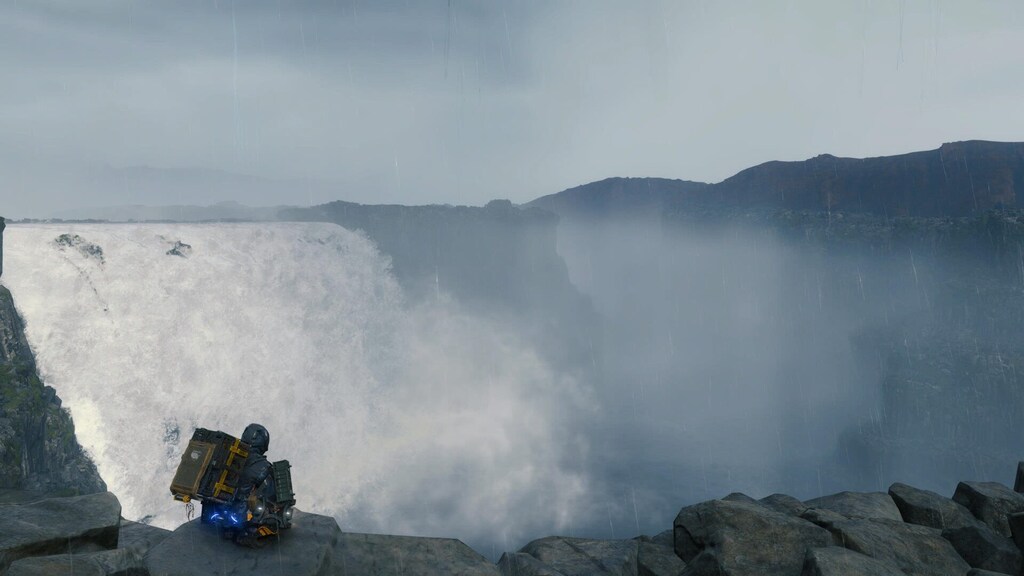Death Stranding, by Hideo Kojima, is a title that each year interests more and more players.
The hype around this “walking simulator,” which I mockingly call the “Amazon Prime Delivery Simulator,” isn’t fading, even though many still can’t explain its phenomenon.
Why does a game that at first glance seems boring and uninteresting become an experience for many that changes the way they perceive games? What makes Death Stranding an almost perfect title for some?
The World in Death Stranding
From the first hours of the game, Hideo Kojima presents us with a vision of a post-apocalyptic world, through which – as Sam Porter Bridges – we must travel, struggling with timefall rain, MULEs (a faction of hostile human enemies), Beached Things (BTs), and above all… terrain.
The United Cities of America, a ruined state through which we travel as a courier, is trying to reunite scattered people and rebuild civilization after the titular Death Stranding. This cataclysm altered reality: timefall rain accelerates the aging of everything it touches – people, structures, machines, packages.
BTs are beings “suspended” between life and death. They are seen only by those affected by the DOOMS syndrome, and their detection is supported by so-called BBs – Bridge Babies – children suspended between the world of the living and the dead. After death, a person in this world becomes a potential BT, and if a Beached Thing catches a living person – an explosion called a voidout occurs, capable of consuming entire cities.
The Goal Isn’t Just Delivering Pizza
In the world of Death Stranding, the player faces many tasks: from delivering pizza, to supplying building materials, to packages for supporting a cosplayer – Kojima in his full scale.
But the main goal is to rebuild the chiral network – connecting all UCA facilities and people willing to join it. Sam’s motivation is a request from his sister Amelie – she wants him to help connect the country and rebuild bonds between people.
Why Is Walking in Death Stranding So Good?
This may sound strange, but the movement mechanics – balancing the load, behavior on difficult terrain – have been refined almost to perfection. However, what makes the biggest impression is the freedom: setting your own routes, pace, and building a true connection with the environment and other players.
Death Stranding allows you to feel freedom in a way that’s rarely found in games – you get a job, a load, a destination, and the rest is up to you. What the route looks like, what you need to take with you, whether it’s worth arming yourself or taking an extra task along the way – Death Stranding leaves all these decisions to us.
Freedom, Connection, Shared Purpose
Kojima clearly communicates the game’s premise: go your own way, but remember you’re not alone. Many times during my play-through, I chose a route that seemed the least optimal. And suddenly – a ladder. A rope. Items left by someone. That feeling – that someone else thought the same, that they left something helpful – was unique to me.
That’s when I understood that the chiral network isn’t just a narrative metaphor. It’s a real connection with other players. Although we are alone for 90% of the game, we are accompanied by the awareness that someone has already been here, or will be soon. It’s an amazing sense of unspoken community.
Warning signs about BTs, route suggestions, mushrooms in places where someone decided to drop excess cargo – all this creates a sense of community, of sharing the same experience. And although it’s not a classic multiplayer game, it is thanks to this that Death Stranding shows how players can be connected on a completely new level.
But Is It Really Freedom If Someone Helps?
Yes. It’s a completely different kind of freedom. Most games impose direction, overwhelm with side activities, fast travel, and markers. In Death Stranding, it’s the players who build the path. We become guides for one another.
Personally, I spent a few days just building roads that allow you to instantly travel from one end of the map to the other. And I didn’t do it thinking “it’ll be easier for me.” I had other goals. The first was to gain a bunch of likes from other players, and the second (less important) was to contribute to this large community and help others just as they help me.
Calm and… Boring?
My beginnings with Death Stranding were tough – it took me five attempts before I got interested in the title. At first, the game felt too slow, even boring. The industry has accustomed us to strong intros – like the prologue in Final Fantasy XVI, which I consider a must-play for any RPG fan – so I had certain expectations for how a major title should start.
But once I got into it, the game became my routine. Relaxation after work. A break from the fast-paced world. A reset in ruined America. Literally going offline in real world.
Why Does It Work So Well?
In a world where games fight for our attention with millions of markers, quests, and events, Death Stranding leaves us alone with ourselves. Without the constant dopamine push forward. We simply exist – walk – experience.
You won’t see a third of the screen covered by UI, or tons of markers and distractions like random events. Hideo’s title pulls us into its world – with sounds, music, emotions, landscapes. And that’s its greatest strength – a full sense of immersion.
Is Death Stranding a Game for Everyone?
Yes and no. It’s a game that gives a lot – but not to everyone. Action-seekers will find it in fights with MULEs, BTs, and bosses. Story lovers will fall in love with characters like Deadman or Heartman. And those who just want to unwind will find something here that’s hard to find anywhere else.
Conclusion
Death Stranding is not just a game – it’s an experience. A story about loneliness, connection, trust, and overcoming obstacles together. Kojima created a title that breaks the mold, focuses on emotions, reflection, and something increasingly rare in AAA games – peace.
For me, it was one of the most unique and memorable moments in my gaming journey. And even if it’s not for everyone, it’s worth giving it a chance – maybe Death Stranding will surprise you too. Just keep on keeping on.


